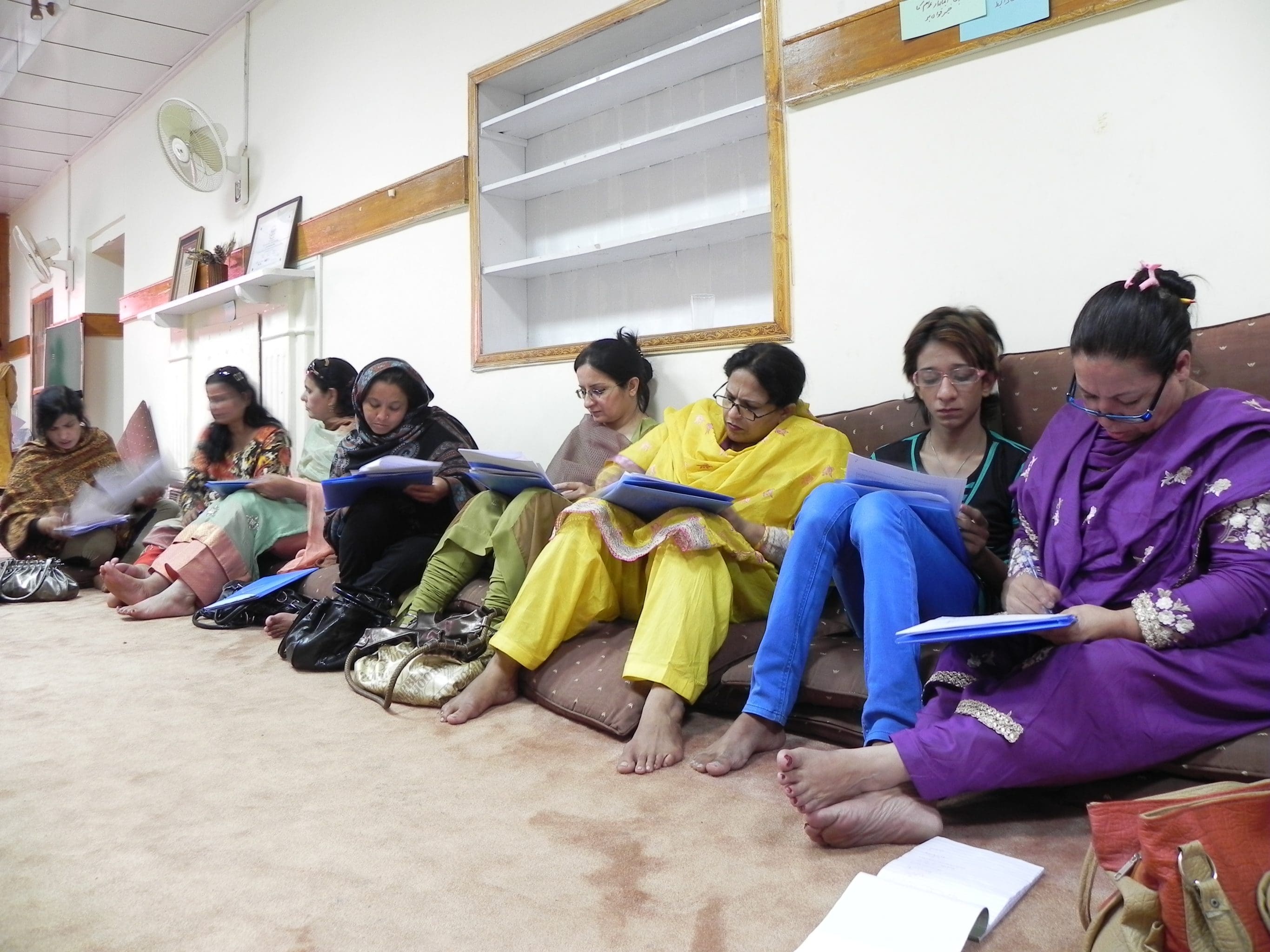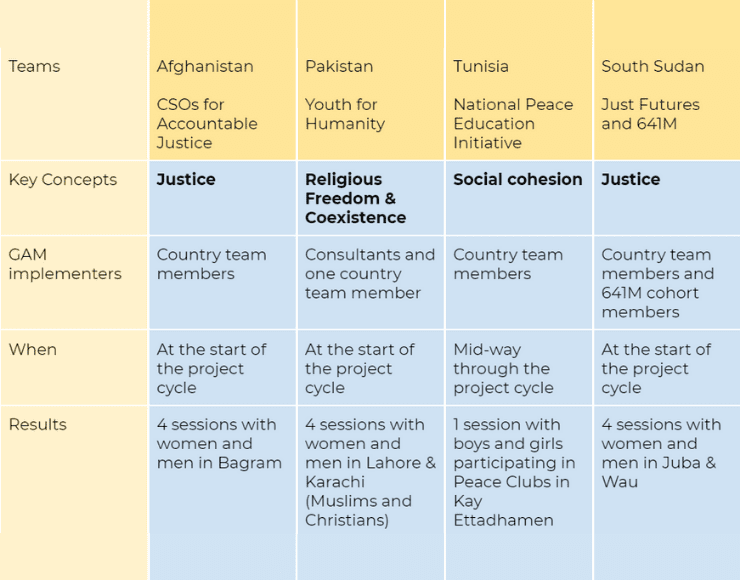
GAM
Grounded Accountability Model (GAM)
Despite the increased emphasis on accountability to target communities, peacebuilding and international development projects are often designed and then evaluated by people who do not share the same lived experiences as participants. The Grounded Accountability Model (GAM) is about holding peacebuilding and development projects accountable to communities as much as to other stakeholders.
We are developing and piloting GAM through a Community of Practice (CoP) that consists of Search for Common Ground, Everyday Peace Indicators and Humanity United. It is an ongoing and collaborative work and we seek to build off of each other’s strengths.

What is GAM?
GAM is a research approach that starts with people that we are designing programs for and ends with solutions that are tailored to their needs. When adopting this approach, researchers and program managers focus on engaging local communities that the programs target and listening to their voices.
GAM engages community members to define everyday indicators of key concepts (such as peace, empowerment, justice) that guide the intervention, and these indicators can then be integrated into monitoring, and evaluation as well as project activities and the broader design. In the long run, GAM aims to enhance community ownership of peacebuilding and development interventions.

Why Does GAM Matter?
Communities know best what peace and other core concepts such as justice, stability, or resilience mean to them. Therefore, they should be the key to decisions regarding how to design new program activities and how to measure effectiveness of programs. By adopting GAM, project teams can facilitate discussions that target certain groups of interest and listen to their priorities, opinions, and concerns.

Why Use This Approach?
We need actionable indicators that help us consistently identify how we make decisions as a field. Concepts that serve as building blocks for many projects, such as peace or safety, empowerment and justice, mean different things to women vs. men, ethnic minority vs. titular ethnic groups, established political parties vs. emerging political leaders. Adopting GAM, we can facilitate discussions that target certain groups of interest and listen to their priorities, opinions and concerns.
Our partners at Everyday Peace Indicators (EPI) used this approach in various settings. Afghanistan was one of such contexts, where EPI collected data from 1500 people across 18 villages in 2016-2017. In every single village—whether under Taliban control or not—Afghans prioritized some form of “girls go to school” in their top five indicators of peace. You can read more about EPI’s approach to GAM here.

Who is GAM For?
- Projects are a good fit for GAM if the intended impact of the project is complex and difficult to measure;
- There are team members available to receive training and lead GAM indicator generation workshops; and
- The team is ready to hold iterative sessions with community members and project staff to integrate community-based indicators into their work.

How Does GAM Work?
GAM can be used continuously throughout the project cycle, but typically involves several key stages. After (i) deciding whether GAM is a good fit for a given project and what could it be used for, (ii) training sessions are conducted with all relevant team members, and a fieldwork plan is developed. Then, during the (iii) GAM workshops, the team gathers a list of everyday indicators from community members who should also vote on the ones they find the most relevant. Finally, these indicators can be (iv) integrated into M&E tools and help measure the progress and impact of the project and also be used to (re)design or adapt current & future activities.

How Has Search for Common Ground Used GAM So Far?
Our Community of Practice has piloted GAM in collaboration with Search for Common Ground’s four country teams in 2020-2021. Each team decided which concepts they would like to measure and when to use this approach. Now that they have generated everyday indicators of concepts like justice, social cohesion, and religious freedom, the teams are in the process of deciding how they would like to use these indicators in their projects.

What’s Next?
Our Community of Practice continues to reflect on questions such as “Can everyday indicators be used for monitoring and evaluation purposes? How can they best inform project activities and design? What are the challenges and benefits of using everyday indicators? Should GAM be applied differently in each context? In what instances is it most useful? What purposes can it serve?” These questions are the crux of GAM.
Please use the button below to Contact Us if you would like to discuss these and other questions with us or if you would like to become a part of the Community of Practice. We would love to continue growing our community and collectively continue investigating the possibility of developing useful, actional everyday indicators for peacebuilding organizations.